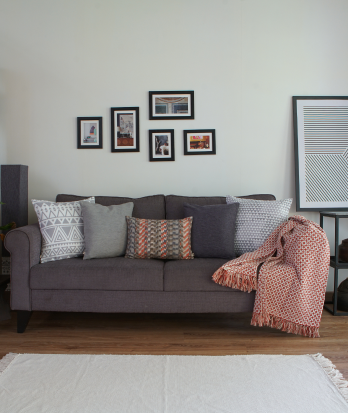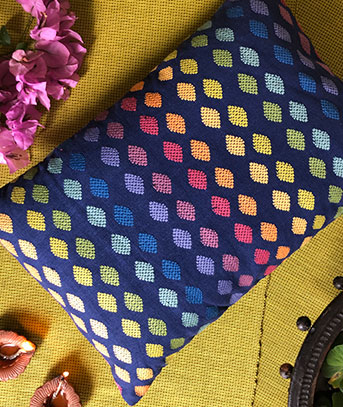“It [Indian Culture] nurtured the synthesis of those cultures which stayed in this country. They affected the Indian way of life and in return got influenced by it.”
Mahatma Gandhi
Our beloved nation has been known for its unique culture, food, clothes, and festivals for thousands of years. Every year, many tourists from foreign countries flock to India to experience its diversity; one of the areas where you can truly experience India’s diversity is its heritage fabrics. From Kashmir to Kanyakumari, from Nagaland to Gujrat – the Indian clothing legacy is so widespread that it will amaze you.
However, the sad truth is, millennials are more influenced by western brands than Indian traditional fabrics. As a result, thousands of artisans are forced to wrap up their business due to the lack of demand and recognition.
To bring a change, start-ups and fashion designers are trying to revive the almost comatose Indian traditional clothing industry with the help of social media. So, it is high time we brush up on our knowledge about India’s pristine heritage of fabrics and celebrate our culture once again.
So, let’s begin our Heritage Fabric Tour of India.
Pashmina
Pashmina is considered one of the most expensive and exclusive fabrics of India. A meter long, original Pashmina stole might cost you over ₹10,000. The wool of this fabric is made from the undercoat of a rare kind of sheep called Pashmina that is found only in the high altitude, cold desert of Ladakh. Every piece of fabric is handmade as the wool is extremely delicate.
Muga Silk
Muga Silk is the pride of Assam. Once reserved only for royalties, it is known for its glossy fine texture and durability. This silk is derived from a silkworm called Antheraea Assamensis that only feeds on Som and Soalu trees. This yellowish-golden tinted silk undergoes a painstakingly long process.
It takes 1 acre of land to produce 400 grams of Muga silk at a time. From rearing the silkworm to weaving a Muga silk saree – it takes roughly two months. Therefore, it is so exclusive that its value is often compared to gold.
Linen
Nowadays, almost everyone is aware of Flax Seeds. It is trendy among health-conscious people for its variety of health benefits. But did you know that the flax tree is used to make linen from where the seeds are derived? As the fabric is exceptionally durable, absorbent, and airy, dresses made of linen are trendy among both men and women.
Furthermore, it dries quicker than cotton and is highly affordable. Therefore, this fabric is now being used to make home furnishings like bed sheets, pillow covers, cushion covers, placemats, table napkins, and many more.
Chambray
Chambray is often mistaken for denim. It is a type of cotton that is made by weaving dyed warp yarn and white filling yarn. It is commonly used to make home furnishings as well as clothing. Since Chambray is softer and more breathable than denim, it is often used to make pants as its substitute.
Handwoven Fabrics
Handwoven textiles have been a bonafide specialty of Indian weavers, with people from all over the world being passionate admirers for centuries altogether. The variety of handwoven fabrics available in India is spectacular, with every state bringing something unique to the table.
Sustainable fabrics that are eco-friendly and provide employment to thousands of skilled weavers throughout the country – the Indian handwoven textiles are nothing short of a national treasure.
Cotton
The Indian cotton fabric has for long been the insignia of our country’s pride, regarded by many as the crest of fabrics made and sold in India. The cotton fiber is skillfully spun into a yarn that is further utilized to create voguish cotton garments.
Cotton, a thin, breathable, and airy fabric, is the preferred choice for almost every Indian during the summers. Natural, authentic cotton is entirely non-toxic and does not have any adverse effects on the skin.
Furthermore, it is highly absorbent and provides boundless comfort in humid conditions. All this, combined with the decent durability of high-quality garments and above all, the love and sentiments of the buyers attached with it, make cotton one of the most superior cultural fabrics of India.
Rayon
Probably one of the most versatile fibers you will find in India, Rayon has traditionally been used here even though it is a semi-synthetic fiber made with cellulose. Rayon fabrics are still as popular as in the yesteryears because of their exquisite slippery texture and comfort. Besides being more absorbent than cotton and linen, the fabric can also be dyed very quickly in various colors to design fashionable garments.
The hallmark of rayon fabrics is that they offer you the best of both worlds. The comfort is as soothing as that of a natural fiber like cotton, while the fabric’s style, drape, and slippery texture are similar to that of nylon. Overall, rayon garments are some of the most luxurious ones that you’ll find in India, offering breathtaking designs, colors, and finesse.
Jute
A close second in the list of the most widely produced plant-based fibers, Jute is a primary textile ingredient in India. The characteristic roughness and durability of jute fabric make it suitable for the production of curtains, carpets, ropes, rugs, twines, cushion covers, etc. In addition, jute fabrics are surprisingly breathable, with considerable tensile strength and low extensibility.
The Indian jute fabric is used to produce some of the finest traditional products, primarily because it is versatile, robust, and blends easily with other synthetic fibers. Printing on jute material is yet another trend, producing eye-catching designs for regular products and garments.
Embroidered Fabric
Embroidery stitches have ruled the Indian clothing industry for thousands of years, be it garments or home furnishing. Universally, there are 15 types of embroidery stitches.
When it comes to the beautification of fabrics, nothing can compare to a beautifully embroidered material.
Nowadays, small home furnishings such as embroidered cushion covers are trendy in Indian households.
Over to you!
By now, if you are fascinated by the rich heritage of Indian fabrics and print and want to be a part of the change, consider shopping from a brand that is dedicated to supporting Indian traditional artisans and promises the highest level of quality over everything else – Thoppia. Check out our finest collection of prints and fabrics here.




